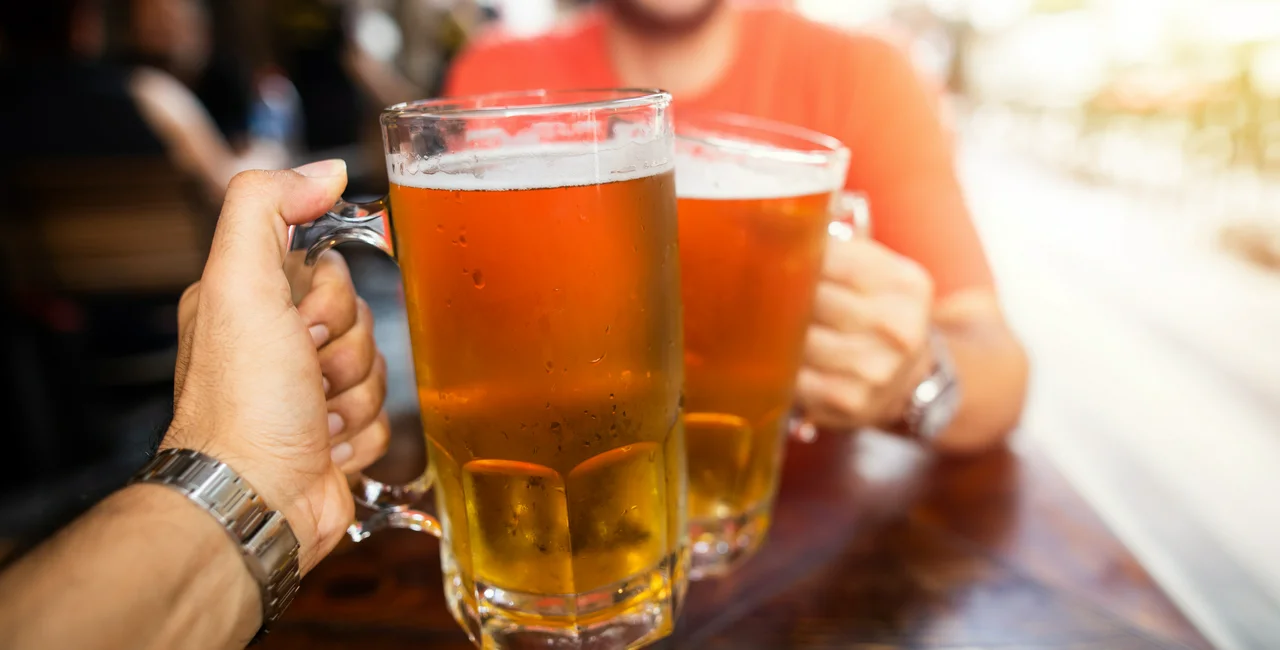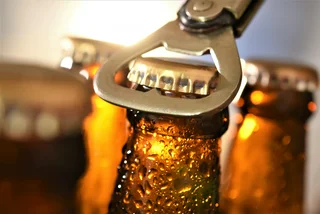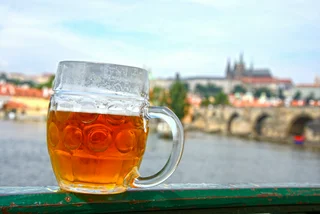Beer consumption per capita in the Czech Republic fell for the second year in a row to 129 liters, the fifth-lowest level since records began in 1950. Production also dropped, but exports rose slightly. The drop over the past two years is attributed to Covid restrictions, but this year inflation and supply problems are set to pose new challenges.
Czech breweries made 19.6 million hectoliters of beer last year, down 2.8 percent year on year. It fell below 20 million hectoliters for the first time since 2014, according to data from the Czech Beer and Malt Association (ČSPAS).
PARTNER ARTICLE
“In the two years of Covid, each resident has consumed 30 fewer half liters [per year], and with 129 liters we have reached the fifth-lowest figure ever. The overall domestic consumption was mainly affected by long-lasting anti-epidemic measures, restrictions on catering, and [a drop in] tourism,” ČSPAS chairman František Šámal said.
In 2020, beer consumption was 135 liters per person per year, while in 2019 it was 142. It was as high as 153 in 2009 but has been below 150 ever since. In international comparisons, the Czech Republic has long led the world in consumption per capita.
Beer market expert Tomáš Maier of the Faculty of Economics and Business Administration of the Czech University of Agriculture (ČZU) in Prague told the news server iDnes.cz the decline in domestic consumption can be halted again if the coronavirus is at an end.
“But we will definitely not get to the consumption of around 160 liters per person that was there 15 years ago," he said.
This is because the older generation of heavy drinkers is simply passing away. The younger generation drinks less and prefers to sample a few craft beers rather than sit and drink a large volume. “We are following the trend that was in Western Europe 30 years ago,” he added.
Even though Covid restrictions are a thing of the past, breweries will continue to face a difficult period due to rising input prices or shortages of raw materials, which are mainly related to rising inflation and the war in Ukraine.
“This situation will affect all breweries, regardless of their size. We will need to work with the government and others to maintain the competitiveness of one of the most traditional industries in our country,” ČSPAS’s Šámal said.
Breweries in 2021 delivered 14.8 million hectoliters of beer to the Czech market, down by 762,000 hectoliters compared to 2020, a drop of 5 percent. Restaurants and pubs sold about a quarter of the production destined for the domestic market.
The most popular type of beer remains lager (ležák), or 11- to 12.99-degree bottom-fermented beer. Lagers account for 55 percent of total production, though it fell 0.7 percentage points.
The share of draft (výčepní) beer, or eight- to 11.99-degree bottom-fermented beer, was almost 41 percent, but this was also a slight drop. The name draft is misleading, as výčepní beer can also be sold in bottles. Breweries produced almost 1.5 million hectoliters of non-alcoholic beers and beer mixes last year, down 2 percent year on year.
The category of “other beers” saw growth and now accounts for 4 percent of total production. It is already back to pre-pandemic levels. This category includes beers stronger than 12 degrees and other special products such as ales.
Last year, beer exports rose by 236,000 hectoliters to 5.2 million hectoliters, accounting for almost 27 percent of the total production of Czech breweries. It was the second-highest in history. Most beer was exported to EU countries, with over half of all exports, 2.7 million hectoliters, going to countries neighboring the Czech Republic.
According to the association, malting plants had a good year, producing 518,000 metric tons of malt, up 6.7 percent compared to 2020. Some 45 percent of production was exported, mostly to Germany and Poland. Hop production last year was 8,306 tons, about 40 percent more than in 2020.
Glass bottles are still the most popular packaging for beer, although its share fell by a percentage point year-on-year to 45 percent. Interest in cans is increasing, up 2 percentage points to reach 18 percent. The use of plastic bottles saw a drop as people are increasingly turning away from plastic.
The Czech Beer and Malt Association brings together breweries, malt makers, and other institutions involved in beer production. Its members include 25 brewing companies, five malt houses, and 18 contributing companies.












 Reading time: 3 minutes
Reading time: 3 minutes 




























